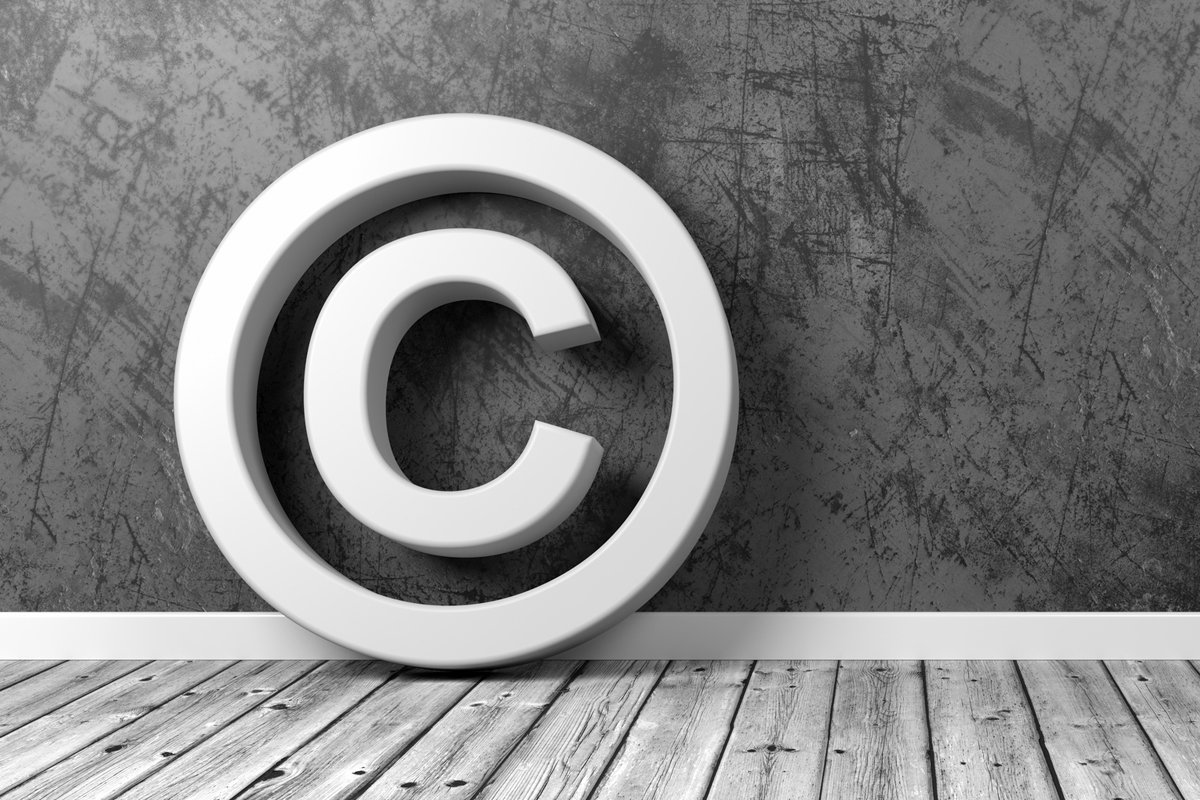defining copyright laws
This week I explored several topics regarding copyright laws and fair use. Under the fair use doctrine, people may make a limited use of the original author’s work without asking for permission (Stims, n.d.). Courts will consider four primary factors in determining whether a particular use qualifies as fair, such as plagiarism, copyright infringement, attribution, and transformation.
Plagiarism can be defined as stealing or taking someone else’s work and claiming it is your own original work (Bailey, 2013). “Work” includes ideas, words, images, and more. A common example is a student copying information from Wikipedia, word for word, in their essay or assignment without citing their source or attributing the original copyright holder.
Whereas plagiarism has more to do with ethics, copyright infringement is a construct of the law (Bailey, 2013). You see, copyright law gives the creator of these works certain rights. For instance, copyright holders can reproduce their work, distribute copies of it, or publicly display their work. Writing an authorize sequel to book would constitute as copyright infringement. A famous example is Fifty Shades of Grey by E. L. James. The novel was originally a fanfiction based on the Twilight novel by Stephenie Meyer and was titled Master of the Universe. The original version, the Master of the Universe, was an unauthorized derivative work based on Twilight. To get her book published, E. L. James had to remove any elements of or references from the original work (Lizerbram, 2015).
Transformation is another factor that is used to determine if a particular use is fair. Like the name suggests, the original copyrighted work has been transformed from its original appearance or nature that the use no longer qualifies as infringing (Stim, n.d.). The example I used earlier about Fifty Shades of Grey is a famous example of transformation. Although Meyer has stated she has no intention of suing James, any potential lawsuits would have been dismissed. That is because, unlike Master of the Universe, Fifty Shades of Grey has been transformed in such a way that is bares little resembles to either Twilight or the original fan fiction. Another example of transformative is book scans by libraries for the propose of providing full-text search engines, preservations, and electron access for those who could not read the print versions (n.d.).
During this week’s lecture, talked about another aspect about copyright: implied consent. Copyright notice is no longer required on public works, so we must assume that postings of all kinds is protected under copyright. For instance, my current blog averages round 130 page views each day. With implied consent, which means if I post my discussions or reflections on blog, it is now public information. Someone could read it, reblog it to their blog, give my attribution, but they never received my person. The implied consent because I put my information out there, it is okay for someone else to share it with credit. It was suggested that we get a Creative Commons license so we could choose how to have it licensed. Creative Commons (CC) licenses all contain an attribution clause (“How to give attribution”, n.d.). Attribution is about crediting a copyright holder according to the terms of a copyright license. More than 90% of CC photos are not attributed to the original copyright holder (Foster, 2015). In fact, 90% of the photos that do credit the original work are attributed improperly. An example of attribution is using a CC-licensed material and including the title, author, source, and license next to it.
One thing I did not know was the employer-employee ownership. This makes me wary as I plan to leave the district after next year. So much of the materials I use in class to support my ELLs I made on my own due to inadequate support. My concern is if I decide to publish or sell the materials, who owns it? Some were made during my personal time while others were made during work. This is another great reason I should get a Creative Commons license. What I have read so far about intellectual property has been quite confusing. Thankfully, our librarian who is also the media specialist is quite versed in this topic and has been extremely helpful over the years regarding copyright and fair use.
should the u.s. copyright office be its own entity?
Most of the week was spent researching copyrighted materials. However, I did get a chance to look at an issue regarding the U.S. Copyright Office. Unbeknownst to me, the U.S. Copyright Office is separate from the U.S. Patent and Trademark Office and is controlled by the Library of Congress. It makes a bit sense when I look deeper at it. For instances, most librarians must be versed on copyright and digital laws.
The Copyright in the News – Hudson Institute White Paper makes the case that the Copyright Office should be an independent agency or a stand-alone agency within the legislative branch (Hudson Institute, 2015). This will allow the Copyright Office to design and implement a modernization program that is precisely tailored to its needs. According to the article, the role and functions of the Copyright Office have evolved over the past 146 years while the structure has remained the same. One of the duties of the Copyright Office is to maintain a database of all copyright registrations. The article, however, believes that the registration database is unsuited to complete this task. As of now, all copyright registrations have or are being stored in hard copy located in the Library of Congress. Some of these records have since been scanned, but online searching is still not possible. Recorded transfers not searchable online either.
The Copyright Office has recommended changes such as compatibility across different web browsers, improved searchability of registered works, and the use of a smartphone app to submit registration applications (Hudson Institute, 2015). However, the Copyright Office has little authority. Most of the responsibility comes down to the Librarian.
Since this article was written in 2015, I decided to do some further research. James Billington has since stepped down and passed away in 2018. Former President Obama appointed a new Librarian, Carla Hayden, in 2016. This was five years ago, and it appears the Copyright Office is still a part of the Library of Congress. Under their strategic plan, it states federal agencies will have reliable access to knowledge from scholars, including the U.S. Copyright Office (Hayden, 2019). They further state in their plan that they want to engage and share knowledge with users and copyrighting creative works requires them to be connected digitally. So, while the report issued in 2015 by the Government Accountability Office confirmed that the information technology systems of the Copyright Office was lackluster, it appears there has been a push to focus to prioritize the Office.
The Hudson Institute made a good argument for separation, although I think more funding could help solve many of the problems. But since this is coming from a conservative perspective, I suspect this has less to do with funding and more to do with authority, or lack thereof. But I do agree with some of the options presented in the article. For instance, they mentioned moving the Copyright Office into the Commerce Department and have it merge with the U.S. Patent and Trademark Office (Hudson Institute, 2015). This, to me, seems like the most logical alternative since they all have to do with intellectual property. I was surprised to learn that that was not already the case. I had not known that these were two separate agencies until reading this. However, the article states at the end that the best option is for the creation of integrated, dedicated systems, such as an independent or stand-alone agency, which will allow them the tailor the program to meet its needs.
While some improvements have been made since the report was released, I will say that if there are no current plan to restructure the Library of Congress to prioritize the Copyright Office, then it should at least be moved to a structure that will allow it to fulfil its tasks as attended.
References
Bailey, J. (2013, October 7). The difference between copyright infringement and plagiarism. Plagiarism Today. https://www.plagiarismtoday.com/2013/10/07/difference-copyright-infringement-plagiarism/
Foster. (2015, March 4). How to attribute creative commons photos. Foster. https://foter.com/blog/how-to-attribute-creative-commons-photos/
Lizerbram, D. (2015, February 17). Copyright fair use: Fifty shades of grey. Keep It Legal Blog. https://lizerbramlaw.com/2015/02/17/copyright-fair-use-fifty-shades-grey/
Hayden, Carla. (2019). Enriching the library experience: The FY2019-2023 strategic plan of the Library of Congress. Library of Congress. https://www.loc.gov/static/portals/strategic-plan/documents/LOC_Strat_Plan_2018.pdf
How to give attribution. (n.d.) Creative Commons. https://creativecommons.org/use-remix/attribution/
Stim, R. (n.d.) Fair use: What is transformative? Nolo. https://www.nolo.com/legal-encyclopedia/fair-use-what-transformative.html
Tepp, S. and Oman, R. (2015, October). A 21st century copyright office: The Conservative case for reform. Hudson Institute. White Paper: Center for the Economics of the Internet. https://www.hudson.org/research/11772-a-21st-century-copyright-office-the-conservative-case-for-reform
share this:




Be the first to reply